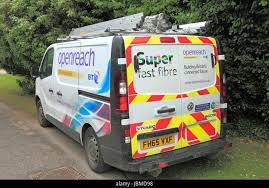The BT broadband division Openreach has reached its 10 millionth build of UK ultrafast fibre broadband. This is a significant milestone, especially as the network upgrade was slowed by budget cuts.
It’s been a long time coming, but the UK’s broadband market is now entering a full-fibre frenzy. The big providers are rolling out their networks, while independent ‘alt-nets’ are competing for customers.

FTTP
In the past, the UK Government has set a commitment to deploy FTTP across the country. However, it has now scaled back those plans due to budgetary constraints and the challenges of deploying the more complex technology. Consequently, it could be many years before FTTP is available to the majority of homes in rural areas.
This is a massive blow for people in the UK who are eagerly waiting to get access to high-speed broadband and enjoy all the benefits that it brings to their lives, such as streaming 4K television and working from home. Fortunately, there are other ways that you can get access to ultrafast broadband if you don’t qualify for the official BT Openreach Gigabit Broadband rollout.
One of those options is to join a Community Fibre Partnership with Openreach. This is a network built by local residents and businesses who are willing to fund the installation of a FTTP broadband network in their area, often with help from the public sector.
However, the coronavirus pandemic has put a lot of pressure on the Openreach workforce and they’ve had to scale back non-essential engineering work across the country. This has stopped or delayed many new broadband and phone connections, repairs and appointments with engineers. The good news is that this work should be resuming soon, with the main focus likely to be on FTTP.
FTTC
There are plenty of providers on the Openreach network offering FTTC broadband. These include BT, TalkTalk, Sky and Plusnet.
This means that most properties can get a fast internet connection from one of these companies. However, you need to be within a certain distance of your nearest cabinet for the speed to work. This is known as the ‘last mile’. The further you are from the cabinet, the slower your broadband will be as it runs along copper telephone wires.
The good news is that FTTC connections are much faster than older ADSL technologies. Typically, a FTTC connection will achieve up to 80 Mbps for download and 20 Mbps for upload. You can check if FTTC is available in your area by entering your postcode here.
FTTC broadband is very popular among businesses, thanks to its reliability and speed. It also has the added advantage of being a great option for those who want to keep their existing phone lines for business calls.
But if you’re looking for even faster speeds, you might want to consider upgrading to Full Fibre. The only downside is that it’s not currently available to everyone, as FTTP only covers around 25% of UK homes.
As a result, FTTC broadband remains the most popular option for businesses, with a 96% availability rate.
But this isn’t entirely likely. For instance, if a FTTP service becomes more cost-effective to deliver high-speeds, it could make sense for BT and other providers to switch over to that. This will mean more premises getting access to ultrafast fibre. But, as the market has shown, it can change quickly, so there is no guarantee that any of these changes will take place. needs read more hear




















